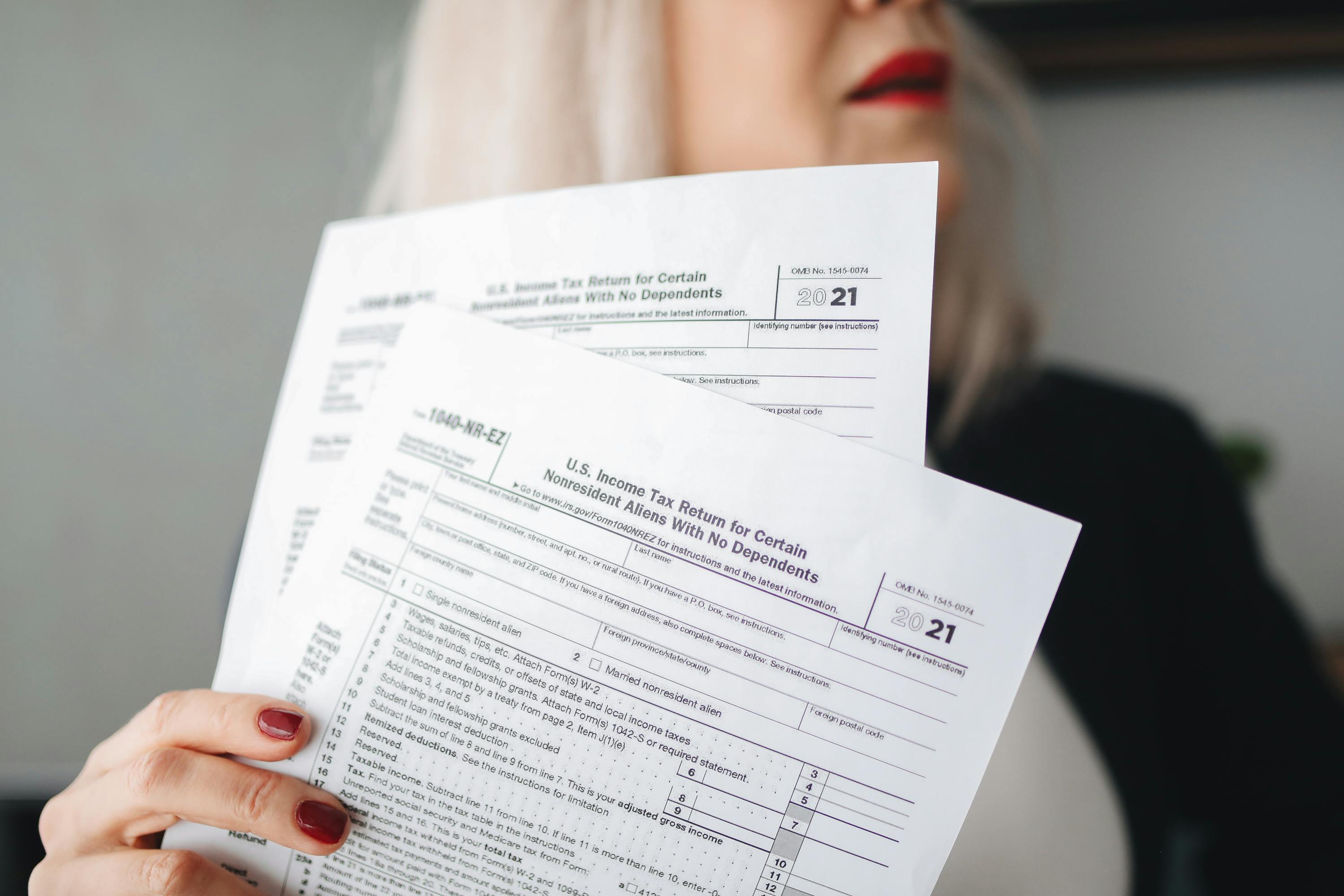Key Takeaways:
- The IRS must be formally notified of a death to process final taxes and prevent fraud.
- IRS Publication 559 and Form 1310 explain how to file final taxes and claim any refunds.
- Executors and surviving spouses are responsible for submitting the proper documentation and tax forms.
When a loved one passes away, settling their affairs involves far more than funeral arrangements and closing bank accounts. A critical step is notifying the IRS of the death.
Failing to notify the IRS of a death can lead to complications, such as delayed tax refunds or even identity theft. Fortunately, the IRS provides specific guidelines, including IRS Publication 559 (Pub 559 IRS), to help surviving family members or legal representatives manage these tax responsibilities.
In this article, if you have authority to act, we’ll guide you through how to notify the IRS of death, how to use the necessary IRS forms for deceased taxpayers, and how to claim a tax refund using IRS Form 1310.
{{blog-cta-checklist-small}}
Why You Need to Notify the IRS of a Death
Notifying the IRS of a death is essential for a few key reasons:
- Preventing tax identity theft: Once the IRS is notified, it helps prevent fraudulent tax returns being filed under the deceased’s Social Security number.
- Closing tax accounts: The IRS can properly close the taxpayer’s account or transition it to the estate.
- Processing final returns and refunds: Executors or surviving spouses need to file final tax returns and, in some cases, claim tax refunds due to the deceased.
Who Can File a Notification of Death With the IRS
Not just anyone can report a death to the IRS. The following individuals have legal authority to do so:
- Court-appointed executor or administrator: If the court has appointed an executor or personal representative, they are primarily responsible.
- Surviving spouse: If a joint tax return is being filed, the surviving spouse can handle this responsibility.
- Legal representative: In the absence of a court-appointed executor, a legal representative can submit the necessary documents with proof of authority.
IRS Forms for Deceased Taxpayer: What You Need
To properly notify the IRS of death and handle the deceased’s tax matters, several forms and documents are required:
- Final Form 1040: File the deceased’s final individual income tax return, marking “Deceased” next to their name along with the date of death.
- IRS Form 1310: If there is no court-appointed representative, this form is used to claim a refund due to the deceased. Be sure to review the instructions for IRS Form 1310 carefully.
- Certified copy of the death certificate: Required if a refund is being claimed and no executor is appointed.
- Letters of Testamentary or court appointment: Needed to establish legal authority if you're the executor.
These IRS forms for deceased taxpayers are critical for avoiding delays or rejected returns.
How to Use IRS Publication 559 (Pub 559)
IRS Publication 559 is your official guide for managing a deceased person’s tax matters. Here’s what you need to know:
- What it is: Pub 559 provides detailed guidance on filing final tax returns, managing the decedent’s income, deductions, and credits.
- Who should use it: Executors, surviving spouses, or legal representatives responsible for final tax matters.
- Where to find it: You can download IRS Publication 559 directly from the IRS website.
Whether you're handling a small estate or a complex one, Pub 559 is an essential reference.
How to Report a Death to the IRS: Step-by-Step
Here’s a straightforward process for reporting a death to the IRS:
- File the final tax return: Complete the deceased’s final Form 1040. Write “Deceased” and the date of death at the top of the form.
- Attach IRS Form 1310 (if applicable): If there is no court-appointed representative and you're claiming a refund, complete and include Tax Form 1310.
- Attach a certified death certificate: This is required only if claiming a refund without a court-appointed representative.
- Include legal documentation: If you're the executor, attach proof of your appointment (e.g., Letters of Testamentary).
- Mail the return: Mail the return and supporting documents to the IRS address listed in the tax form’s instructions. The correct address depends on your location.
{{blog-cta-checklist-large}}
FAQs
1. What is IRS Publication 559 and when should I use it?
IRS Publication 559 helps estate representatives or survivors handle final tax issues for a deceased person. Use it when filing the final 1040, handling the decedent’s income, or managing estate taxes.
2. What is IRS Form 1310 used for?
IRS Form 1310 is used to claim a refund on behalf of a deceased taxpayer when no executor has been appointed.
3. Do I need to send a death certificate to the IRS?
Yes, if you are claiming a refund and are not the court-appointed representative, you must send a certified copy of the death certificate.
4. Who is responsible for reporting a death to the IRS?
The court-appointed executor, surviving spouse, or another authorized legal representative.
5. What about the Social Security death benefit form?
While not an IRS form, the SS death benefit form (Form SSA-8) should be filed with the Social Security Administration to claim the $255 death benefit.
Notifying the IRS of a death is a vital part of managing a loved one’s financial legacy. It prevents fraud, ensures proper closure of tax matters, and allows surviving family members or legal representatives to claim any owed tax refunds. By using IRS Publication 559, understanding IRS forms for deceased taxpayers, and completing Tax Form 1310 when necessary, you can handle this process with clarity and confidence.
Need help navigating estate and tax responsibilities? Visit Elayne’s Automated Estate Settlement page to simplify the process with expert-backed tools and guidance.
*Disclaimer: This article is for informational purposes only and does not provide legal, medical, financial, or tax advice. Please consult with a licensed professional to address your specific situation.


















































